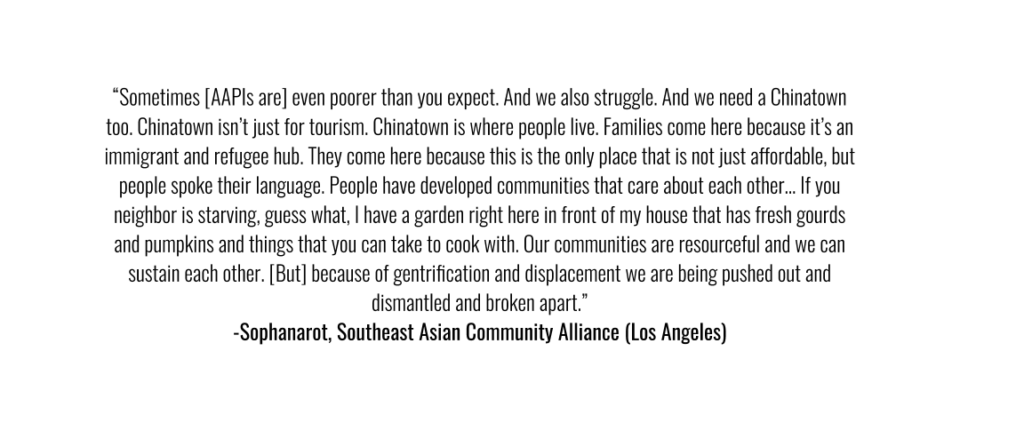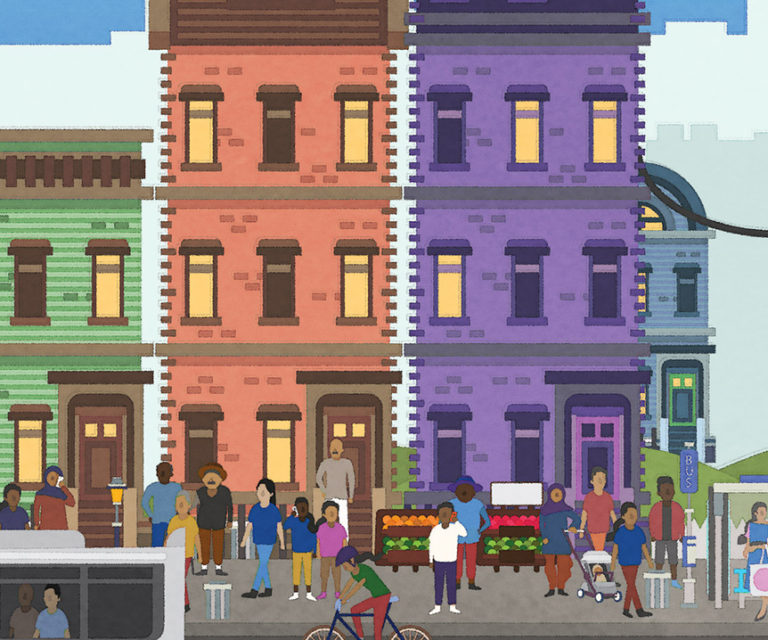Why an Anti-Gentrification Organizing Toolkit

As a coalition of community based organizations by and for AAPI neighborhoods and communities, National CAPACD has witnessed directly and heard from our members about the systematic displacement of low-income AAPIs from the urban neighborhoods that our communities have called home for decades. Our low-income community members that are located disproportionately in high cost urban centers. This means that low-income AAPIs are impacted disproportionately by the increase in the cost of residential and commercial rent in high cost, “hot market” cities. Recognizing the urgent need to confront displacement our network realized that traditional strategies of service delivery are not enough to combat the market forces at work in our communities. Deepening our support for grassroots organizing at the neighborhood level is a primary way to make lasting change at the neighborhood level for the communities we represent.
Building on work that is already happening in local communities in #OurNeighborhoods, National CAPACD developed this toolkit to articulate our analysis of gentrification, its causes, and our strategies to address it. The toolkit includes best practices from the AAPI neighborhood organizing field and incorporates our analysis of the root causes of displacement. We present successes and challenges from campaigns that have taken place in #OurNeighborhoods. We provide two step by step guides and a set of data tools:
- Building Tenant Power: Your Guide to Preserving Tenant Rights in Your City;
- Building Neighborhood Power: Your Guide to Controlling Development in Your Community;
- Data Tools for Anti-Displacement Advocacy.

Who is the Toolkit for?
This toolkit’s intended audience is (1) low-income AAPI tenants/ residents at risk of displacement and (2) grassroots organizations comprising local organizing, advocacy, and service groups based in at-risk AAPI communities and neighborhoods. Additionally, we hope this will be a resource for organizations who are new to community organizing, to gentrification and displacement, or to working with AAPI communities.
The first guide -- Building Tenant Power -- is written with the intended primary audience of tenants/community residents. And the second guide -- Building Neighborhood Power -- is written with the intended primary audience of community-based organizations. However, we do not assume that these are mutually exclusive audiences and we hope that both guides are accessible and useful to multiple constituencies.
How Can I Use This Toolkit?
The lessons-learned and resources included here are meant to build knowledge and for adaptation depending on your needs.
The toolkit can be used as a whole or you can select the parts that you find most relevant. The following pages (also linked to in the guides) list resources for you to use and adapt:
● Building Tenant Power: Your Guide to Preserving Tenant Rights in Your City;
● Building Neighborhood Power: Your Guide to Controlling the Development Process in Your Community;
● Resources: Lists of template documents, tip sheets, and reference guides provided within the toolkit;
● Case Studies: List of the organizations profiled for the toolkit;
● Anti-Displacement Data Tools: Data sheets and profiles that we have compiled to help build the case for AAPI Anti-Displacement.
This toolkit represents our values - empowerment of the most impacted and a shared vision of healthy, thriving, just communities for all.
If you have additional ideas and case studies to share, please contact us quinn@nationalcapacd.org. We already know of many other important examples that we will be adding in coming months. And we always appreciate support in growing our library of resources.


